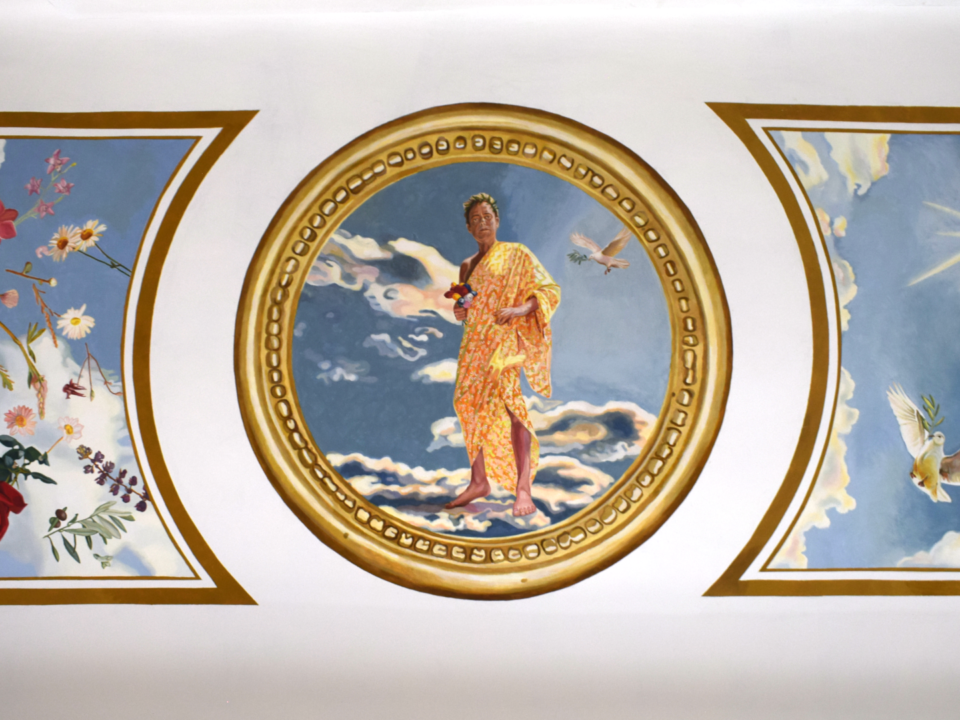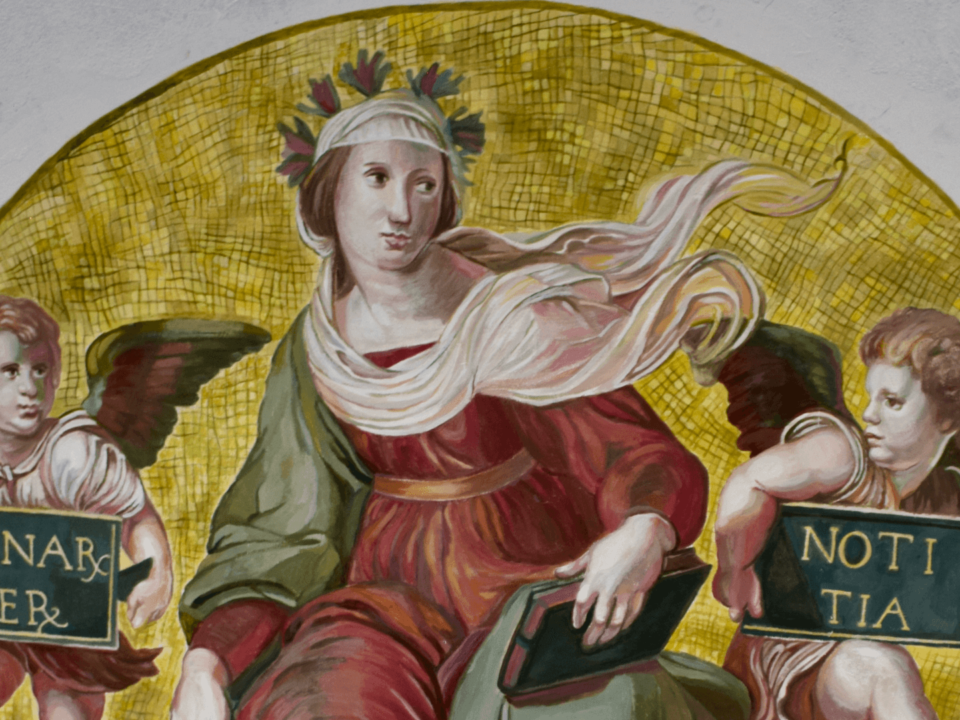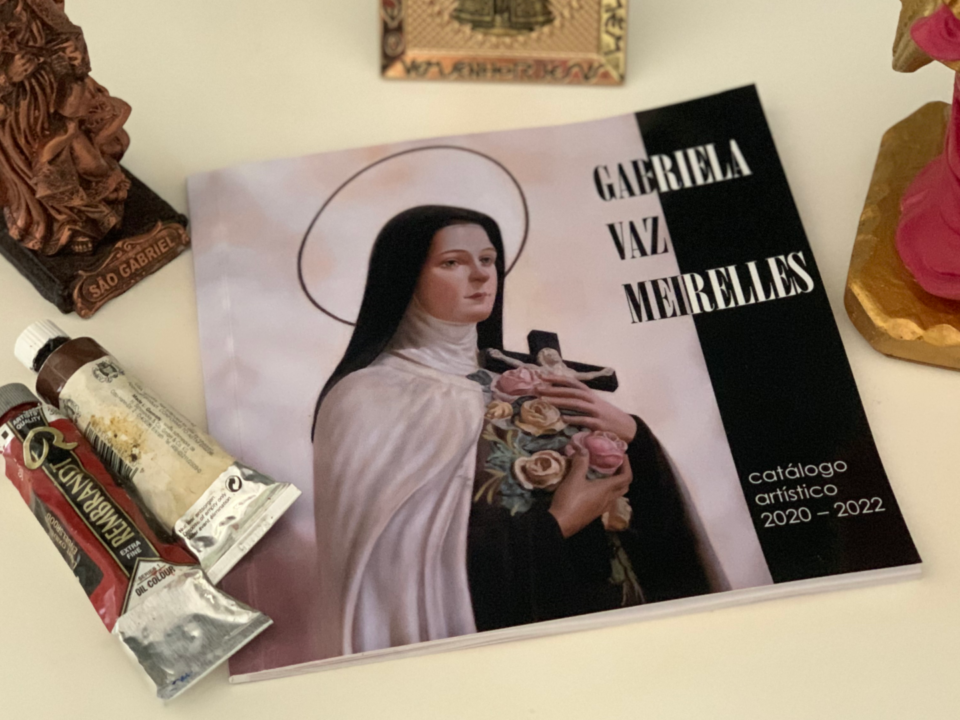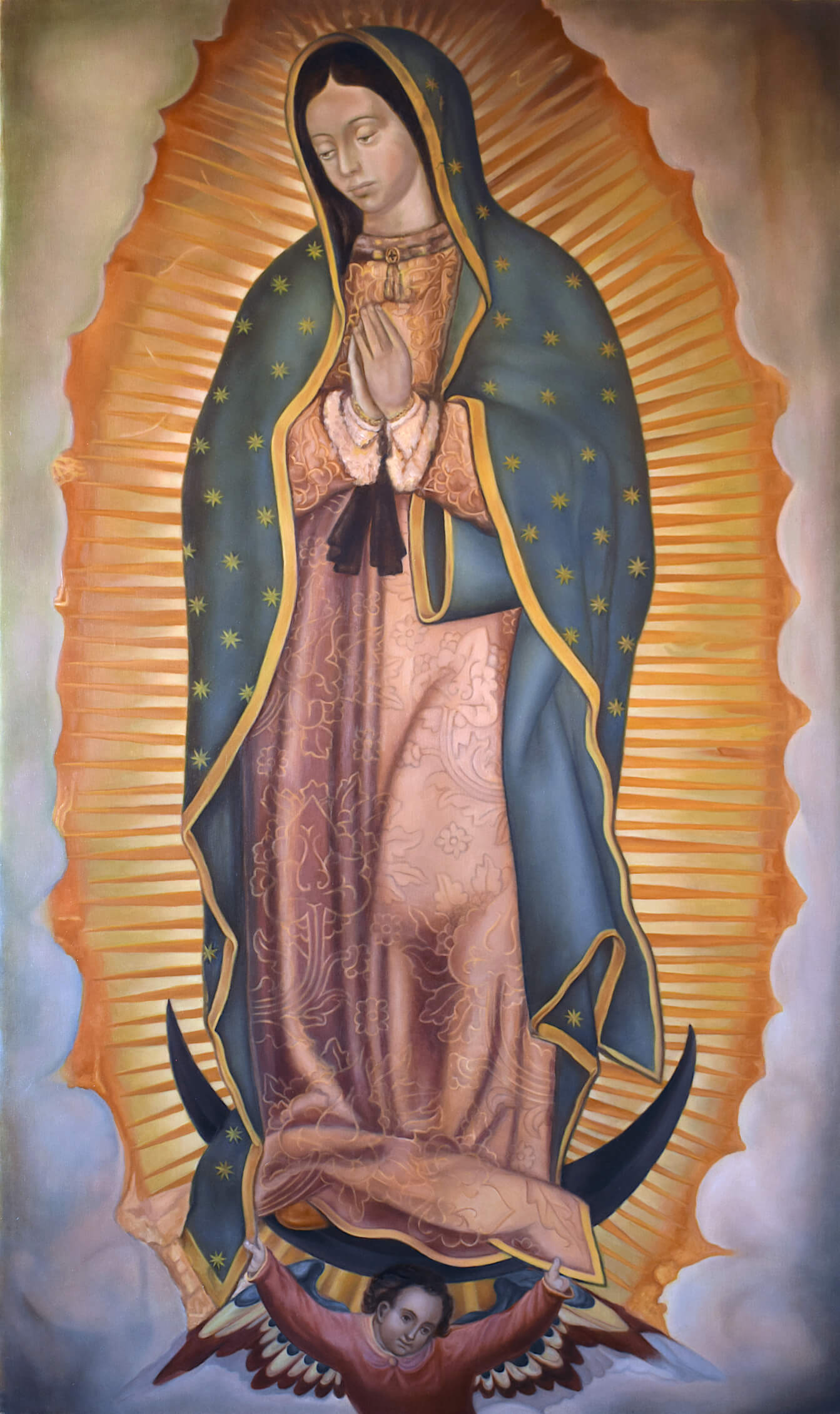
Gabriela Vaz Meirelles, Our Lady of Guadalupe, oil on linen, 100 x 60 cm, 2020
History Background
On December 12, 1531, Our Lady appeared in Mexico, for the fourth time, to a 57-year-old indigenous man named Juan Diego, whom she asked to collect with her tilma, a typical mantle made of very poor fabric, Castile roses that had bloomed in that region despite the winter, and that he presented them to Archbishop Don Juan de Zumárraga as an evidence of the apparitions. When Juan Diego unfolded the mantle with the roses in front of the archbishop, the people present there realized with great surprise that was imprinted on the tilma of the indigenous the image that the whole world now knows as Our Lady of Guadalupe. This impressive and indestructible image is kept in the Basilica of Our Lady of Guadalupe in Mexico City, the most visited Catholic sanctuary in the world.
On October 12, 1895, the canonical crowning of the image took place during the pontificate of Leo XIII. And on October 12, 1945, Pope Pius XII declared Our Lady of Guadalupe as the “Patroness of all America”.
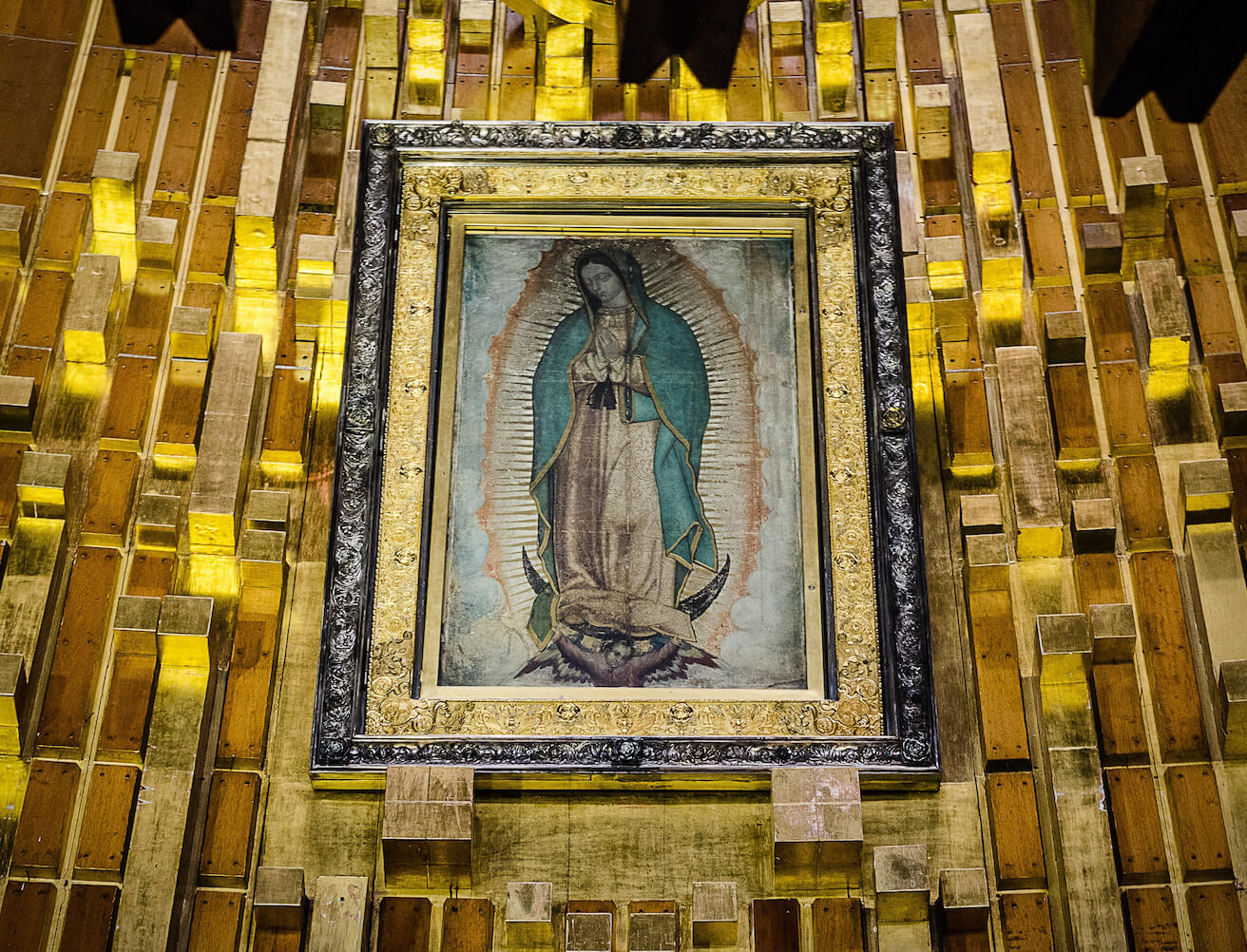
Original image at the Basilica of Our Lady of Guadalupe
Characteristics that Have Defied Science for Five Centuries
The image of Our Lady of Guadalupe is surrounded by history, symbolism and mystery, starting with the date of the apparition. In 1531, the year of the appearance of Our Lady of Guadalupe, the conjunction of Venus took place. In the ancient Aztec culture, the Aztec god of wind and judgment, Quetzalcóatl, whose name means feathered snake, tended to the fullness of the thirteen days and the thirteen years. Moreover, the number 13 represented the perfect number and symbolizes the birth of the Sun.
The mantle or ayate mainly woven with agave fibers, a type of cactus, measures 1.68 x 1.05 m and its rough surface, in addition to being unsuitable for a painting, makes it almost impossible to preserve any image painted on it. In addition, the sacred image has been unprotected for more than 116 years.
In 1785, during a cleaning of the glass that protects the mantle, nitric acid solvent was poured over much of the image, which should have been instantly corroded. However, the image has been restored by itself in an inexplicable way, leaving small spots only in parts of the mantle that do not contain the image. It also went through an explosion, in 1921, in the Basilica of Our Lady of Guadalupe, but the image was the only thing that remained intact.
The scientists and photography experts who have studied the image guarantee that no painting technique suitable for this fabric has been used and that there are not even brush strokes on it. Instead, what has been discovered is that the image was literally printed, all at the same time, on the mantle. It was also discovered that the image has no mineral, vegetable or animal dyes, it is not possible to determine the nature of the pigment used, in addition to the fact that it remains intact, without discoloration, for almost 500 years.
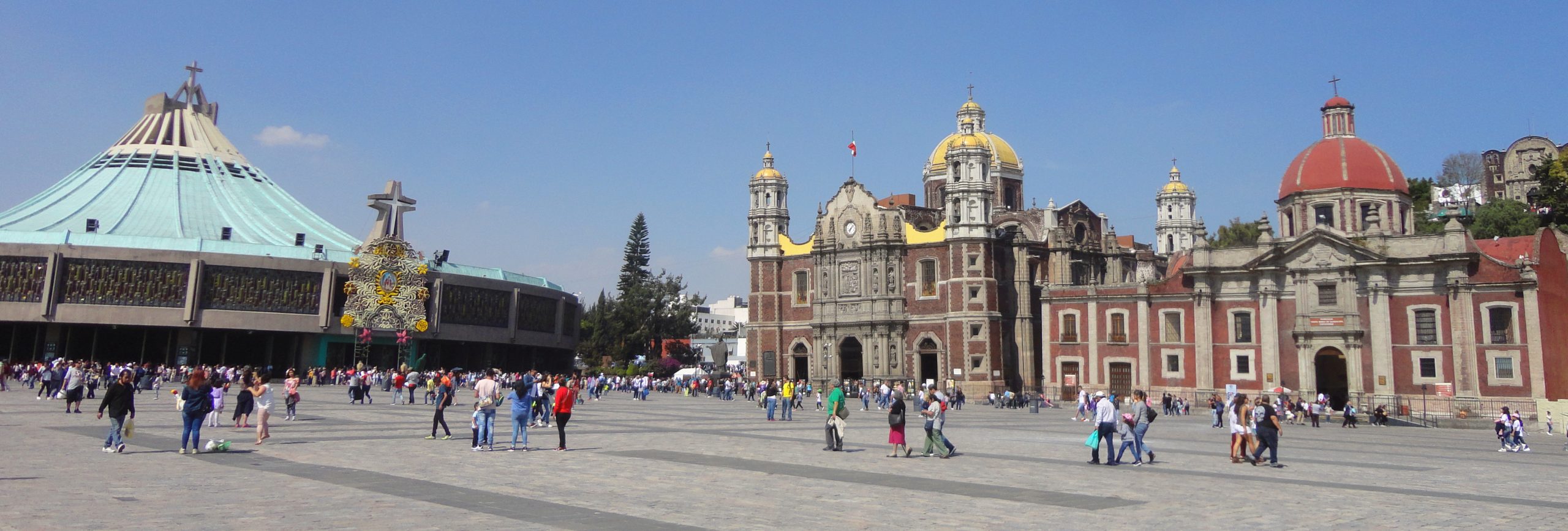
The new and old basilicas of Our Lady of Guadalupe in the Tepeyac Hill in Mexico City
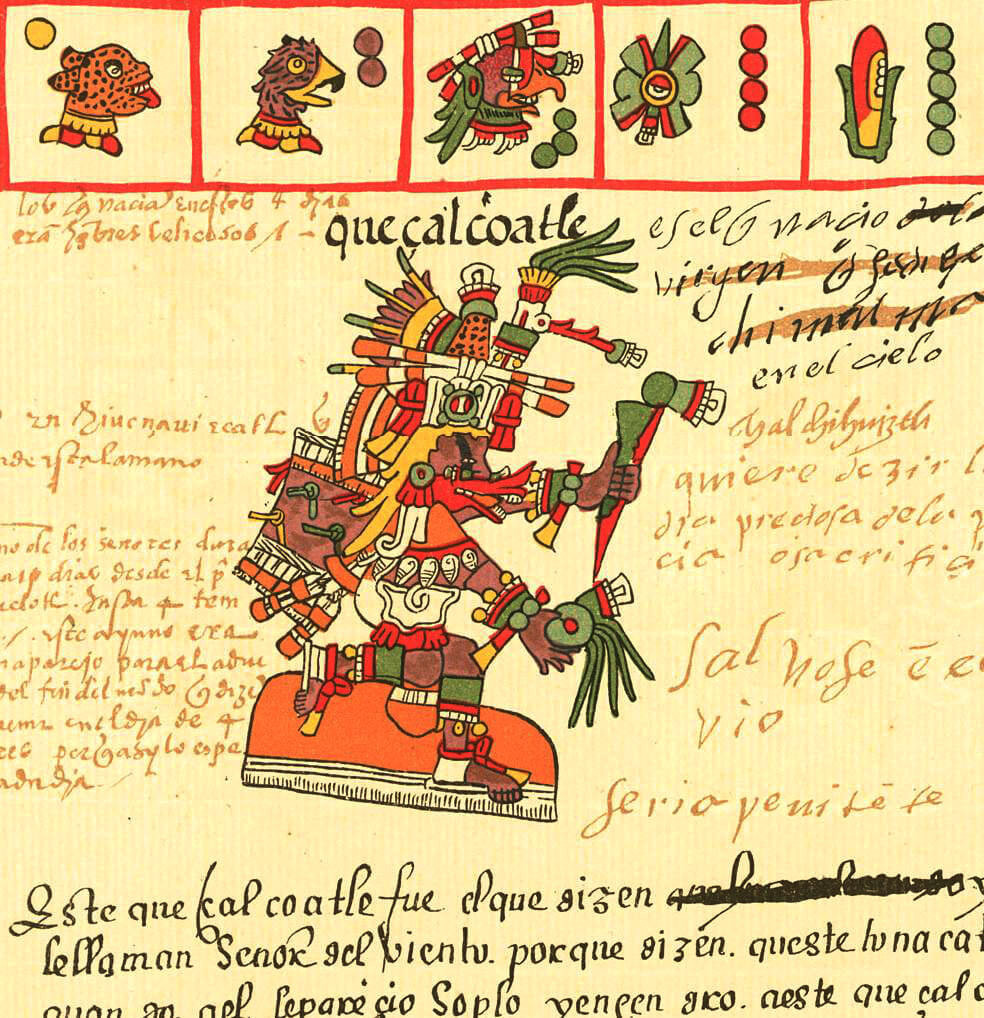
The ancient Aztec god Quetzalcóatl
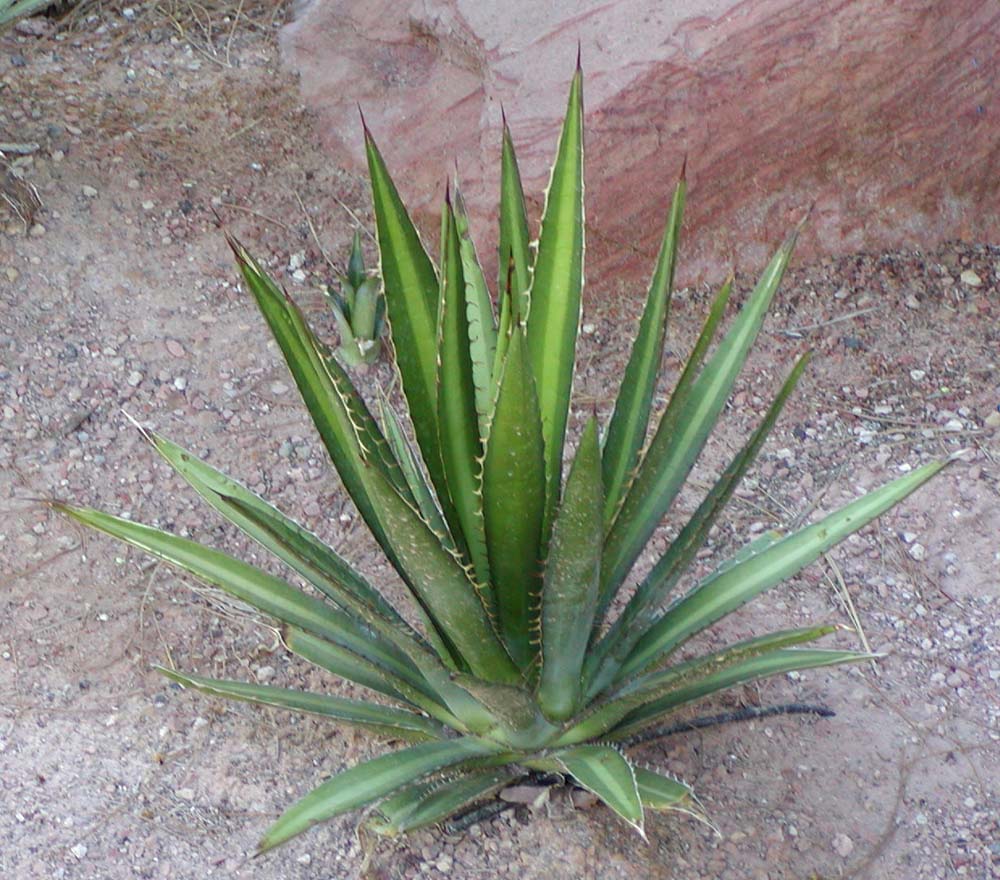
Agave, a type of cactus
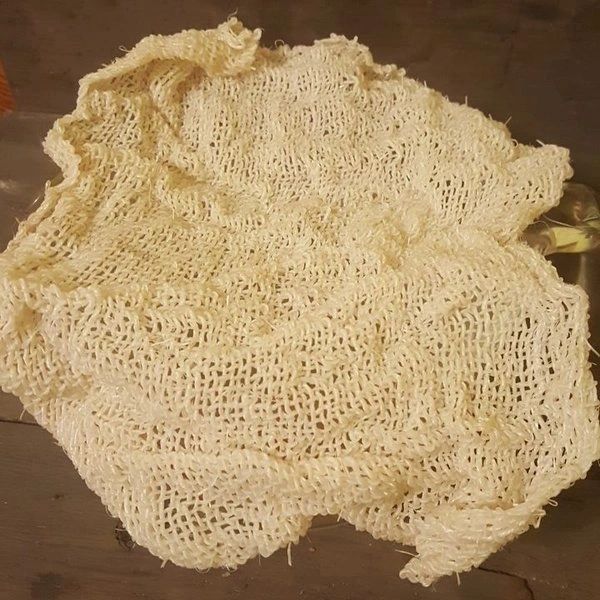
The mantle or ayate, mainly woven with agave fibers
“In the poor Juan Diego's tilma… brushes that are not from this world left painted a very sweet image”.
POPE PIUS XII
Numerous Impressive Details
The virgin has loose hair splited in half, as the indigenous virgins used, since the married women wore it with two braids intertwined on both sides.
Regarding the eyes, a big surprise: the Peruvian engineer José Aste Tonsmann concentrated on studying them and, with magnification of 2000 times, he identified the reflection of up to 13 individuals in both eyes, with different proportions, exactly as it happens when the human eye reflects an image. It seems to be the capture of the exact moment when Juan Diego unfolded his mantle in front of Archbishop Zumárraga and the other people present at the occasion.
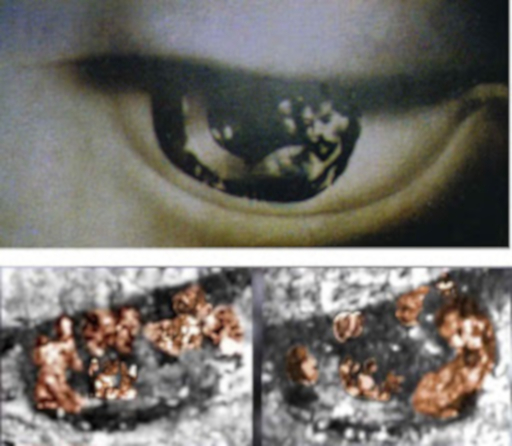
The possible reflection of up to 13 individuals in the Virgin's eyes
The Virgin's face is neither Spanish nor indigenous, but mestizo, of a young woman around 16, which is a prophecy about the merger of two races. In 1531, there were no mixed-race young people of that age. Among the indigenous people, looking directly into the eyes was an offense, so she is not looking at us directly, but with her head bowed, telling us that we are not her slaves, but that she is always caring about us.
The luminous aura that surrounds the Virgin are the sunbeams announcing the arrival of Jesus Christ, the Son of God. The moving Sun is the greatest deity worshiped in the Aztec culture and the Virgin radiates it for the good of all Creation.
The mouth of the Blessed Virgin is painted on a defect of the ayate, but it is anatomically perfect. It is small and seems to start a slight smile.
With her hands together, the Virgin is in constant prayer.
The black belt is a sign of pregnancy that indigenous women wore above the waist. The belt is also a symbol of the end of a cycle in the Aztec culture.
In the chest there is an oval that is identical to the ones seen in the Aztec gods statues, like their own soul that gives them life, and in the middle there is a black cross.

Scheme of the constellations on the firmament on December 12, 1531
The colors of the whole image are royalty colors. The turquoise blue of the mantle adorned with stars represents the sky studded with emeralds, a mantle color that only emperors wore. It has 46 8-pointed stars that are in the same position as the firmament was on December 12, 1531, being a kind of mirror of the constellations on that date. For the ancient Aztec, it coincided with the birth of the Sun, the return of the god Quetzalcoátl.
The tunic is pink and would represent the land and the dawn. It contains figures in gold color, which is the divine metal, representing a divine message with flowers. For the indigenous, flower and song mean the truth, a very potent Aztec symbol, and for the Spanish bishop, the signal that was being sent by the Virgin was also the symbol of truth. Thus, the appearance of the Virgin would represent the union between two irreconcilable peoples: the indigenous and the conquering Spaniards.
Among the figures there are nine arrangements with flowers. The drawings of the floral adornments come from the mantle of the Virgin and symbolize a river that furrows the fields to water them, produce food and give life. The leaves and flowers are also the symbol of the new fire, one of the metaphors of war. Therefore it recalls the past, when a new people appeared there, guided by Maria, winner of the war.
The drawing has a flower bud, which means the insistence of the message and ends with a large leaf. The four-petal flower, which is the most important, represents the Sun Boy, pointing out to the indigenous that the virgin brought the birth of Christ. For the indigenous, the 4-petal flower at the height of the womb also indicates: the 4 cardinal points, the 4 seasons, 4 past periods awaiting the return of the god Quetzalcoatl, and the conjunction of Venus, which coincides with the winter solstice of 1531. And the 8 8-petaled flowers represent for the Aztecs eight conjunctions of the Sun and Venus, which coincided every 104 solar years, which are equivalent, in turn, to 65 years of Venus.
The sacred year of 260 days, the solar year of 365 days and the year of Venus of 584 days, the three calendars coincided with the arrival of the Virgin of Guadalupe and, for the indigenous, men and universe met to start again, at the beginning of a new era.
In fact, the cultures that developed in Mesoamerica were closely linked to observing the sky and the movement of the celestial dome, which allowed them to build different calendars and hold religious festivals, civil activities, planting and harvesting.
The tip of the Virgin's right shoe appears over the moon and is similar in color to the tunic. The moon under the feet, which was in a crescent on that date, in addition to evoking the Apocalypse, also evokes the name of Mexico in the Aztec language, which is “the navel of the moon”. Furthermore, a possible etymology of the meaning of Guadalupe would be "the one that comes from the East like the Sun", or “the one that comes from the region of light”.
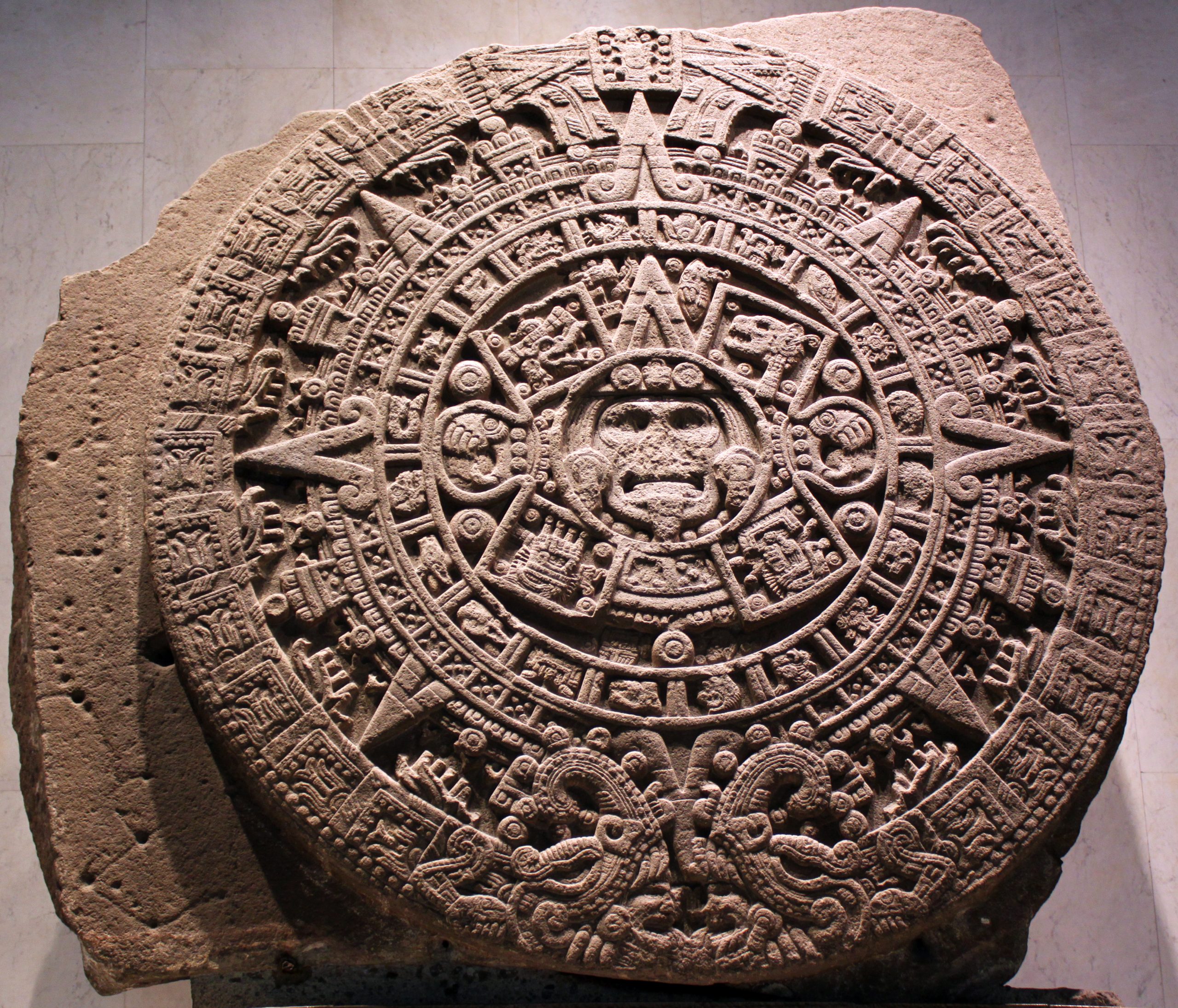
The ancient Aztec calendar
“A great sign appeared in heaven: a woman clothed with the sun, with the moon under her feet”.
REVELATION 12:1
The little angel that appears at the feet of the Virgin, represented with wings of the typical birds of that Mexico City region, has his hands up as the indigenous people represented the gods: with one hand he holds the mantle and with the other one the tunic, symbolizing the junction between earth and heaven. He is also the symbol of San Juan Diego (the lord who speaks like an eagle). He could be a warrior-eagle that belonged to the Army of the Sun and represented the people of the Sun with eagle wings, which is the symbol of the founder of the Great Tenochtitlan (the eagle devouring a snake). The colors of his plumage and tunic are similar to those of the Virgin's clothes and the light of the upper part of the angel’s head and arms comes directly from the Virgin Mary's body.
The clouds that surround the image associate them with the height, the elevation of the spirit and announce the arrival of Jesus Christ.
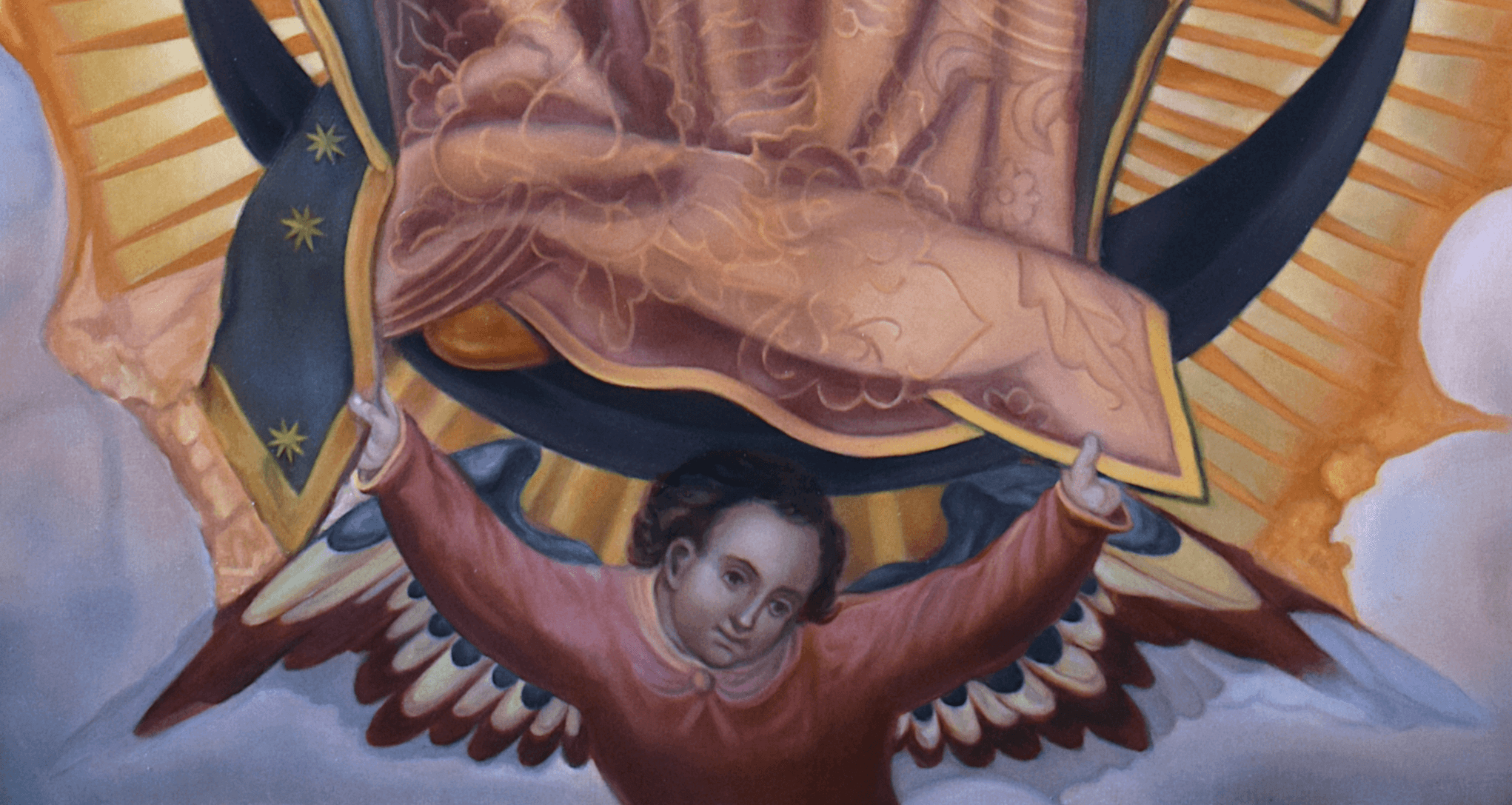
Detail of the moon, shoe and angel from Gabriela's Guadalupe
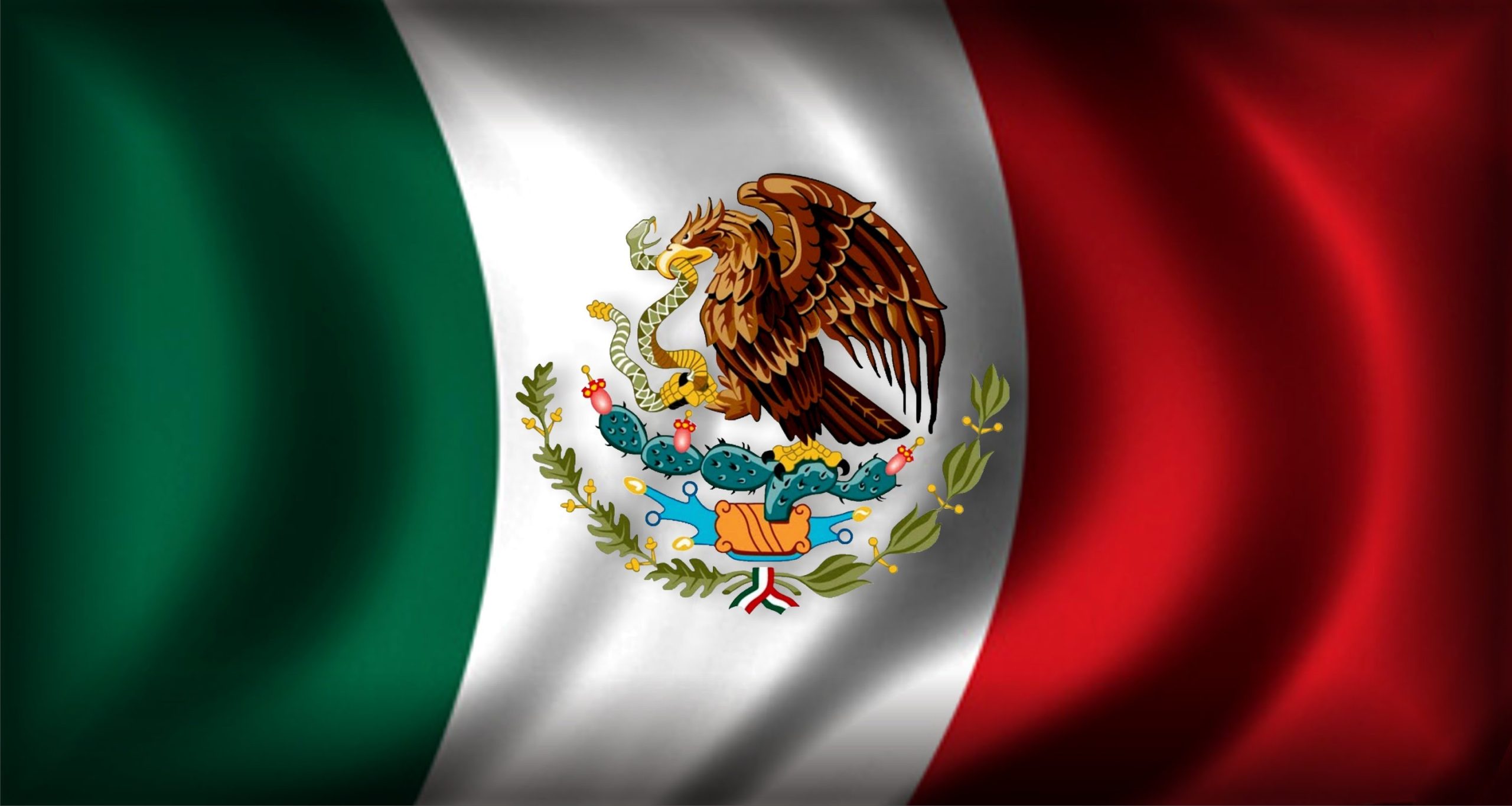
Mexico flag showing the eagle devouring a snake
A Commission for a Private Home
It was with great enthusiasm that Gabriela received as a commission the realization of a reproduction of such an impressive image and so full of symbolism. She was aware that the miraculous creation of the original would make any copy elusive and knew about the importance of Our Lady of Guadalupe in the conversion and restoration of a whole nation, but this fact made her even more excited for the challenge. She felt it was also a great responsibility and opportunity to transmit the significance of the image through a successful painting.
Therefore, Gabriela developed the painting of Our Lady of Guadalupe in oil on a fine linen canvas with approximately one third of the original size, 100 x 60 cm, in order to suit its future home, respecting the colors, the position of the stars in the mantle and the flowers in the tunic, in short, all the main symbols. She recognized that the image of Our Lady would be like a codex, where all the drawings have a meaning, representing a synthesis between Christian iconography and Mesoamerican culture.
“Everything about it is miraculous: an image that comes from flowers harvested in a totally sterile terrain, in which only thorns can grow… an image printed on such a thin canvas that through it the people and the Church's nave can be seen… God did not act like that with any other nation”.
POPE BENTO XIV, 1754
The Painting Process
Although the original image was found impressed on a rough ayate surface, Gabriela decided to reproduce it on a fine prepared oil linen canvas, following the Old Masters multi-layered approach to oil painting. After stretching the canvas, she applied a cold medium gray color to the entire surface with a palette knife. This is because due to its high value, a white canvas can disturb the painter’s sense of the relative values of colors applied to it, so it needs to be properly adjusted. For the underdrawing layer, Gabriela transferred the composition to the surface of the primed linen using a burnt umber color. In the next day, she did a warm grisaille layer using a mixture of transparent oxide brown and raw umber. She then applied successive dead layers of a mixture of white and raw umber to adjust the form and tone of the face and hands of both the Virgin and the angel. For the color underpainting layer, she applied broad fields of color in the major areas and turned to the smaller ones using smaller brushes. She worked gradually, day after day, returning to most areas several times to add depth and details after allowing previous coats of color to partially dry. Finally, she did the glazing stage using very thin layers of transparent colors and let the painting dry. After it was completely dried, she applied a thin layer of varnish to protect it from dirt and dust, to revive the colors and even out the painting's final appearance.
References
AQUINO, Felipe. Descrição do manto de Nossa Senhora de Guadalupe, 12 de dez. de 2019. Editora Cléofas. Available at: https://cleofas.com.br/descricao-do-manto-de-nossa-senhora-de-guadalupe/.
Códice Guadalupano. Instituto Superior de Estudios Guadalupanos, 2020. Available at: https://morenita.mx/codice_guadalupano.html/.
El Relato. Insigne y Nacional Basílica de Santa María de Guadalupe, 2001-2020. Available at: https://virgendeguadalupe.org.mx/el-relato/.
GUADALUPE, un'immagine viva. Directed by Luca Trovellesi Cesana. Italy: Studio3 TV, 2009. 1 DVD (52 min.).
LA virgen de Guadalupe. Directed by Alfredo Salazar. Mexico: Calderón Cinematográfica, 1976. 1 DVD (105 min.).
Síntesis de las Apariciones. Insigne y Nacional Basílica de Santa María de Guadalupe, 2001-2020. Available at: https://virgendeguadalupe.org.mx/sintesis-de-las-apariciones/.

